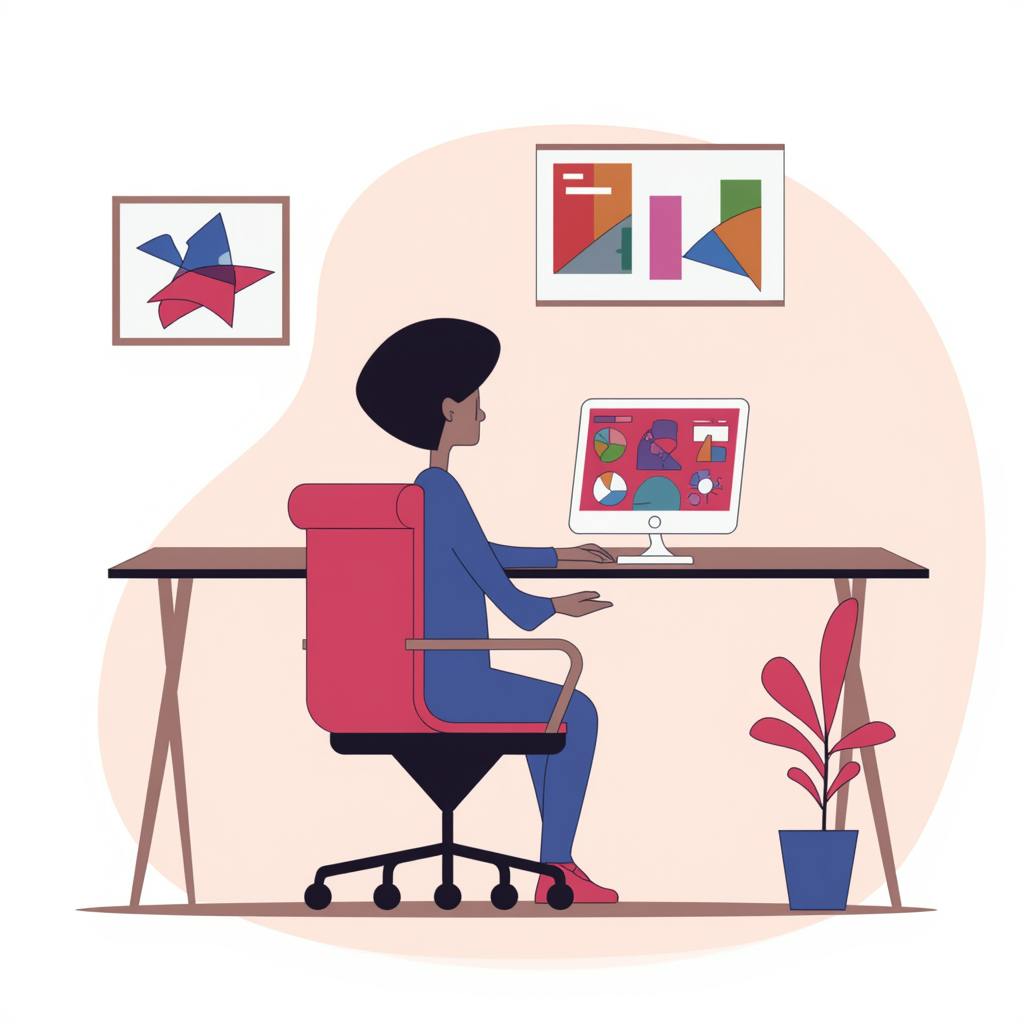Graphic design is a pivotal component of effective communication and visual artistry. At its core, it is built on a foundation of fundamental building blocks known as 'graphic design elements'. These elements serve as the essential tools every designer must master to create compelling and visually cohesive designs. Understanding what graphic design elements are, delving into what the basic elements of graphic design entail, and exploring what the 7 elements of graphic design encompass are vital for anyone seeking to excel in this creative discipline. This article will provide a clear, concise, compelling, and credible exploration of these indispensable components.
What Are Graphic Design Elements?
Graphic design elements are the primary components used to construct visual compositions. These elements include line, shape, color, texture, space, form, and typography. Each serves a unique purpose and contributes to the overall effectiveness and aesthetics of a design. Let's discuss each element in detail to understand their individual roles and how they collectively enhance graphic design work.
- Line: A line is one of the most fundamental elements of design. It can be defined as a mark that spans a distance between two points, and it is used to guide the viewer's eye, create forms, and divide spaces. Lines can be straight or curved, thick or thin, and they evoke different moods and energies. For instance, straight lines suggest stability and order, while wavy lines convey movement and fluidity.
- Shape: Shapes are areas defined by boundaries, such as lines or color contrasts. They can be geometric (squares, circles) or organic (natural, free-form shapes). Understanding the interplay between different shapes can add balance or tension to a design, depending on how they are utilized. Shapes are the building blocks that establish structure and form in graphics.
- Color: is one of the most powerful elements in a designer's toolkit, capable of evoking emotions, highlighting important attributes, and crafting distinctive brand identities. The color wheel, color theory, and principles of color harmony help designers choose effective color schemes. Different hues, saturations, and brightness levels can affect the mood and clarity of a design.
- Texture: Texture refers to the surface quality of a design that relates to how something might feel if it could be physically touched. In graphic design, texture can be visual or tactical, achieved through imagery or layering techniques. Incorporating texture adds depth and richness, making designs more engaging and realistic.

AI made with Dean Jones
- Space: Space, or the area between and around elements, plays a critical role in design composition. Known as 'white space' or 'negative space', it helps to avoid clutter, provides breathing room, and emphasizes certain elements. Effective use of space can enhance readability and direct the viewer’s focus.
- Form: Form is closely associated with shape but with the added dimension of depth. It refers to 3D objects in a design, achieved through light, shadow, and perspective. Form adds realism and interest, transforming flat, two-dimensional shapes into lifelike representations.
- Typography: Typography is the art and technique of arranging type. It involves selecting typefaces, point sizes, line spacing, and letter spacing. Typography significantly impacts the tone of the design and ensures readability and accessibility. It's crucial for communicating messages clearly and powerfully.
Frequently Asked Questions
What are the 7 elements of graphic design?
The seven elements of graphic design are line, shape, color, texture, space, form, and typography. Together, these elements form the essential vocabulary of visual design and are integral to creating balanced and effective visual communications.
What role do graphic design elements play in practical design work?
Graphic design elements are instrumental in establishing the structure and aesthetic appeal of a design. They act as tools for visual storytelling, guiding the viewer's eye and conveying messages through balanced compositions. Mastery of these elements allows designers to communicate more effectively and create impactful visuals.
FAQ: Essential Graphic Design Elements
Welcome to our FAQ on graphic design elements! Whether you're a budding designer or an experienced professional, understanding these fundamental components will enhance your work and broaden your creative horizons. Below, we'll address some commonly asked questions about the essential elements of graphic design.
What Are the Most Important Graphic Design Elements Every Designer Should Know?
Graphic design is built on seven foundational elements. Mastery of these elements allows designers to effectively communicate messages and create aesthetically pleasing work. The most important graphic design elements are:
- Line: Lines form the building blocks of graphic design, directing the viewer’s attention and creating structure. They can be straight, curved, or angular, and vary in thickness or style.
- Shape: Shapes are defined areas created by lines. They can be geometric (like squares and circles) or organic (irregular and more fluid). Shapes often form the basis of a design composition.
- Color: Color influences mood and emotion and is crucial for conveying a specific brand message. Understanding color theory, including hue, saturation, and brightness, is vital for any designer.
- Texture: Texture adds depth and interest to a design, making a two-dimensional surface seem more tangible. Visual textures can be used in digital formats to mimic the feel of real materials.
- Space: This element, often referred to as 'white space' or 'negative space,' is pivotal for creating an organized and aesthetically pleasing composition. It helps to separate elements and gives the eye room to rest.
- Form: In a three-dimensional sense, form refers to the depth of an object. In graphic design, it relates to the perception of depth created through shading, perspective, and light.
- Typography: Typography is the art of arranging text in a legible and visually engaging way. It involves selecting typefaces, point sizes, line lengths, and adjusting the space between letters (kerning) and lines (leading).
How Can Understanding Essential Graphic Design Elements Improve My Design Skills?
Mastering these graphic design elements allows you to:
- Enhance Visual Communication: By understanding how each element works, you can better convey your message effectively and powerfully.
- Create Harmony: Knowing how these elements interact can help create balance and coherence in your designs.
- Increase Efficiency: A firm grasp of design principles helps streamline your creative process, saving time on revisions and enabling quicker decision-making.
- Innovate: Understanding these basics gives you the foundation to experiment and push boundaries creatively.

AI made with Dean Jones
Are There Any Specific Graphic Design Elements Crucial for Professional Design Projects?
While all graphic design elements play critical roles, certain elements take precedence depending on the project type:
- For Branding: Color and typography are crucial for maintaining brand consistency and recognition.
- For User Interface (UI) Design: Space (especially the use of white space) and form are essential for ensuring functionality and clarity.
- For Print Design: Texture and line can greatly influence the tactile and visual appeal of the final product.
What Resources Can Help Me Better Understand and Apply Essential Graphic Design Elements?
There are numerous resources available to deepen your understanding and application of graphic design elements:
- Books: Foundational texts like "Design Elements: A Graphic Style Manual" by Timothy Samara or "The Elements of Graphic Design" by Alex W. White provide comprehensive insights.
- Online Courses/Workshops: Websites like Coursera, Skillshare, and LinkedIn Learning offer courses that cover everything from basic principles to advanced techniques in graphic design.
- Design Software Tutorials: Mastery comes with practice. Utilize tutorials from Adobe (Photoshop, Illustrator) or other software like Figma, Canva, and Sketch.
- Design Communities: Join groups like Dribbble or Behance to observe real-world applications of design principles and receive feedback from peers.
- Mentorship: Consider finding a mentor in the design industry who can provide guidance and feedback on your work.
By consistently exploring these resources and practicing applying these elements in your work, you'll significantly enhance your design capabilities.
We hope this FAQ has given you a clearer understanding of the essential graphic design elements. Remember, mastery of these elements not only strengthens your design projects but also opens doors to innovation and conceptual thinking in your work. Happy designing!
Conclusion
Understanding and mastering the essential graphic design elements are crucial for any designer aiming to create visually striking and communicative artwork. Lines, shapes, colors, textures, spaces, forms, and typography each contribute uniquely to the design process. These elements provide a framework within which creativity unfolds, resulting in designs that are not only aesthetically pleasing but also functional and engaging. By internalizing these fundamental concepts, designers can ensure their work consistently adheres to the principles of effective visual communication.

